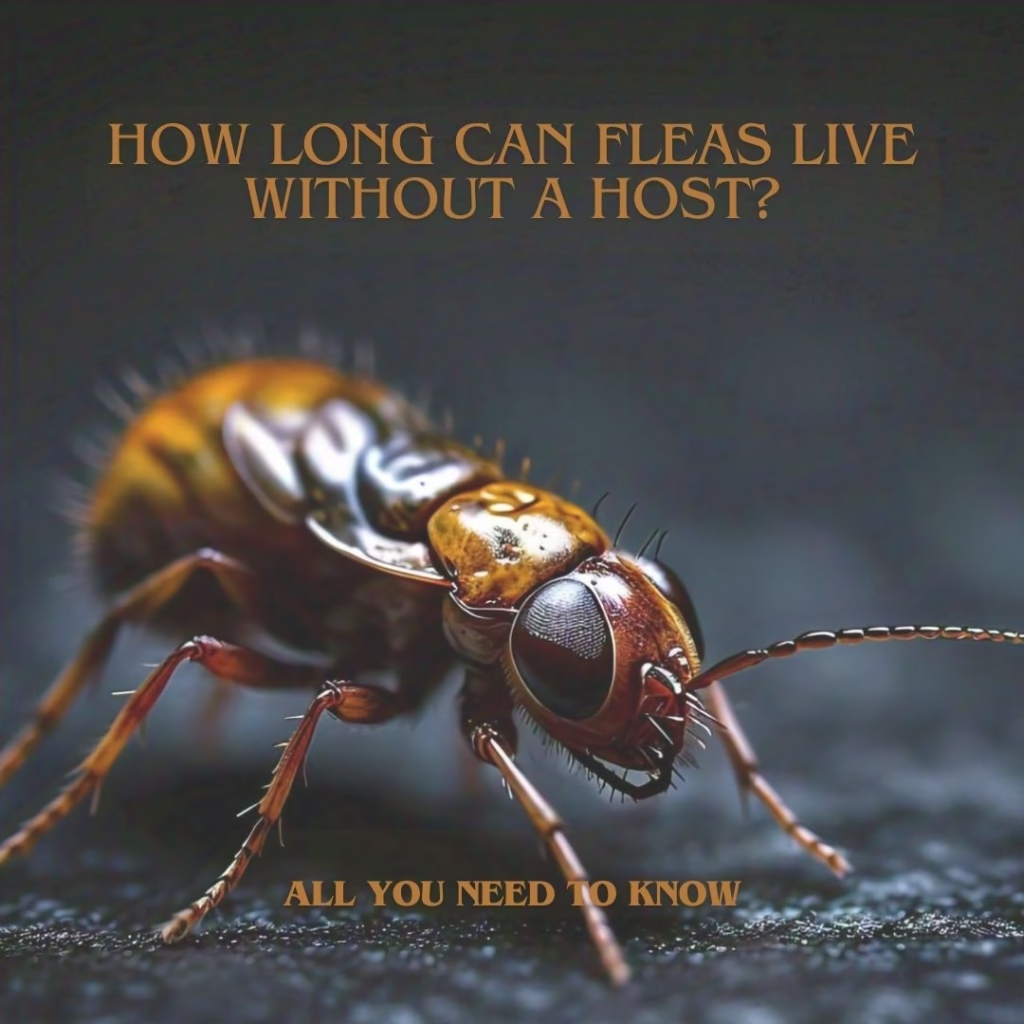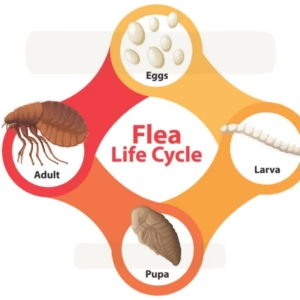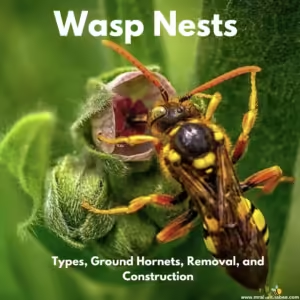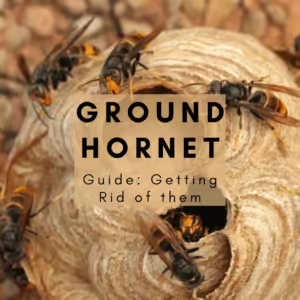How Long Can Fleas Live Without A Host?
Fleas are resilient parasites that rely on blood meals to survive and reproduce. How long can fleas live without a host? Typically, adult fleas can survive for 2 to 4 days without access to a host. However, under optimal conditions, such as warm temperatures and high humidity, they may survive for up to 7 days without feeding. Understanding how long fleas can live without a host is crucial for effective pest control and ensuring the health of your home and furry companions. This post will explore flea behavior, their life cycle, and how environmental factors influence their lifespan.
What Are Fleas?
Fleas, belonging to the order Siphonaptera, include around 2,500 species of small, flightless insects that act as external parasites on mammals and birds. The most common types in homes are the cat flea (Ctenocephalides felis) and the dog flea (Ctenocephalides canis). These pests feed on the blood of their hosts, causing itching, allergic reactions, and potentially transmitting diseases like tapeworms and typhus.
Adult fleas commonly measure about 3 millimeters (1/8 inch) in length, have a brown coloration, and possess a laterally flattened body that allows them to navigate easily through their hosts’ fur or feathers. Fleas primarily target pets and wildlife, thriving in warm, humid environments and depending on hosts for reproduction. Notably, adult fleas can survive for 2 to 4 days without a blood meal, but under optimal conditions, they may last up to 7 days without a host.
Lacking wings, fleas have powerful hind legs that enable them to jump up to 50 times their body length. Their mouthparts are designed for piercing skin and sucking blood, while their claws help them remain attached to their hosts. Flea larvae are worm-like and lack limbs; they have chewing mouthparts and feed on organic debris that accumulates on their hosts.
Understanding the biology and behavior of fleas, including how fleas can live without a host, is crucial for effective pest control and prevention strategies, especially in homes with pets. Recognizing that fleas can survive for several days without a host highlights the importance of prompt action in managing infestations.
Flea Life Cycle
Fleas undergo four stages in their life cycle:
Egg
Flea eggs are commonly laid on the host or in the surrounding environment. They are tiny, white, and oval-shaped, making them difficult to see. The hatching process takes between 1 to 10 days, depending on environmental conditions such as temperature and humidity.
Q: Where do fleas lay their eggs?
Fleas lay their eggs on their host or in nearby areas like bedding, carpets, and upholstered furniture, ensuring the eggs are in warm, sheltered environments. For pets that go outdoors, eggs may also be deposited in grass or shaded spots. Aiding their life cycle, this strategic placement increases the chances that larvae will quickly find a food source. Understanding these locations is important for effective pest control, as targeting them can help disrupt flea populations and prevent infestations.
Q: How long does it take for flea eggs to hatch?
Depending on environmental conditions like temperature and humidity, flea eggs usually hatch into larvae within 1 to 12 days. While extreme cold can cause the eggs to perish before they hatch, warmer, humid environments facilitate faster hatching. This vulnerability highlights the importance of maintaining suitable conditions for flea development. Effective pest control strategies often involve managing temperature and moisture levels to disrupt flea reproduction and reduce infestations. Understanding these factors is crucial for homeowners aiming to combat flea problems effectively.
Q: Are flea eggs visible to the naked eye?
Flea eggs are tiny and oval-shaped, typically measuring about 0.5 mm in length. Their white coloration allows them to blend in easily with various surfaces. This hidden quality makes them difficult to detect without close inspection, often requiring careful examination of bedding, carpets, and pet fur to identify their presence.
Q: Can flea eggs survive in cold conditions?
While flea eggs can endure a range of environmental conditions, exposure to extreme cold can significantly impede their development and prevent them from hatching, ultimately disrupting the flea life cycle.
Larvae
The larval stage lasts from 5 to 20 days, during which the larvae are worm-like and lack limbs. Including flea dirt (dried blood) and other detritus found in the host’s environment, they primarily feed on organic debris.
Q: What do flea larvae eat?
Q: How long does the larval stage last?
The larval stage lasts between 4 to 18 days, after which the larvae spin silk cocoons and enter the pupal stage. Maintaining suitable environmental conditions is crucial for their survival; humidity levels below 45 percent can be lethal to the larvae.
Q: Are flea larvae visible?
Yes, flea larvae are visible to the naked eye and resemble tiny, white, worm-like creatures, making them identifiable in their environment.
Q: What environmental conditions do flea larvae prefer?
Flea larvae thrive in warm, humid environments, which support their growth and development.
Q: What do flea larvae eat?
In addition to feces, flea larvae consume a variety of organic matter, including food particles, dead skin, decomposing insects, and feathers.
Q: What do flea larvae eat?
After leaving their host, flea larvae seek shaded areas like cracks in floors, carpets, pet bedding, and sheltered spots under furniture. Their survival depends on humidity and temperature; they cannot tolerate relative humidity below 45-50 percent or soil temperatures exceeding 95 degrees Fahrenheit. Outdoors, and larvae thrive in cool, shaded locations and crawl spaces. In optimal conditions, fleas can develop year-round.
Pupa
In this stage, fleas enter a cocoon-like structure, where they can remain dormant for several months. This pupal stage allows them to wait for favorable conditions or a potential host before emerging as adults.
Q. What do flea pupae look like?
Flea larvae spin a cocoon around themselves, similar to a caterpillar, forming a protective casing. Once securely enclosed in the cocoon, the flea undergoes metamorphosis, eventually transforming into an adult.
Q: What happens during the pupal stage?
Fleas form a cocoon and can enter a dormant state, allowing them to survive for extended periods until favorable conditions or a host becomes available. During this pupal stage, fleas are protected from environmental threats, which can last from days to months. The cocoon keeps them safely tucked away until they detect vibrations, heat, or carbon dioxide from nearby animals, signaling the presence of a host. This dormancy is a key survival strategy, enabling fleas to emerge quickly when conditions are right.
Q: How long can fleas remain in the pupal stage?
The pupal stage can last from a few days to several months, with the lifespan of flea pupae influenced by environmental factors like temperature and humidity. Fleas develop into adults more quickly in warm, humid conditions. During this stage, they become more resistant to various environmental threats and insecticides.
Q: What triggers a flea to emerge from the pupal stage?
Vibrations, heat, and carbon dioxide from potential hosts can trigger fleas to emerge from their cocoons.
Q: Can fleas be killed during the pupal stage?
The pupal stage is resistant to many treatments, making it challenging to eliminate fleas during this time.
Adult
Adult fleas can live for several weeks to several months, depending on environmental conditions and the availability of hosts. Once fleas find a host, they begin feeding and reproducing almost immediately.
Q: How quickly do adult fleas begin reproducing?
With a host for blood meals and suitable environmental conditions, a flea can reproduce continuously, generating hundreds or even thousands of fleas in a short period. Adult fleas can start reproducing within 24 to 48 hours after finding a host.
Q: How long do adult fleas live?
Adult fleas can survive for several weeks to several months, influenced by environmental conditions and the availability of hosts. In ideal settings—specifically warm and humid environments—they thrive and reproduce more efficiently. In contrast, extreme cold or low humidity can reduce their lifespan.
Q. How long can fleas live without a host?
Access to a consistent blood supply from hosts is essential; without it, adult fleas may perish within just a few days. Recognizing these factors is vital for effectively managing flea populations.
Q: What do adult fleas feed on?
Adult fleas start seeking food as soon as they emerge from the pupal stage, usually feeding on the blood of their host.
Q: How can I prevent adult fleas from infesting my home?
A: Regular cleaning, vacuuming, and using flea prevention treatments on pets can help keep adult fleas at bay.
How Long Adult Fleas Can Live Without a Host: Lifespan and Influencing Factors
Average Survival
Adult fleas need a blood meal to survive and reproduce. How long can fleas live without a host? Their lifespan is restricted, typically allowing them to survive for 2 to 4 days, but under optimal conditions, they may last up to 7 days.
Optimal Conditions
In warm (70-85°F) and humid environments (above 50%), fleas can maintain hydration and increase their activity, enhancing their lifespan.
Unfavorable Conditions
In extreme cold or low humidity, flea survival time decreases significantly, underscoring the need for suitable environments for effective flea management.
Factors Influencing Survival:
Temperature and humidity are critical factors in a flea’s lifespan without a host. Typically around 70-85°F coupled with approximately 70% humidity, fleas thrive in warm and humid environments. In such optimal conditions, they can survive for several weeks.
Temperature
- Fleas are most active and reproduce efficiently at temperatures between 70-85°F.
- Exposure to temperatures below 50°F can significantly reduce their survival time, while extreme heat above 95°F can be lethal.
- Fluctuations in temperature can trigger flea activity, prompting them to seek hosts more aggressively.
Humidity
- Fleas require humidity levels above 50% to maintain hydration and prolong their lifespan.
- High humidity (around 70%) not only aids in survival but also enhances their reproductive capability.
- Low humidity levels can lead to rapid dehydration, shortening their lifespan and impacting their ability to reproduce.
Flea Survival Strategies
Fleas are resilient pests that can adapt to challenging conditions in several ways:
Pupal Stage Dormancy
During the pupal stage, fleas can stay in their cocoons for months, which helps them shield themselves from harsh environmental conditions. This dormancy allows them to wait until they sense a suitable host nearby. By staying in this protective state, fleas can endure unfavorable conditions and emerge only when the environment is more favorable for their survival and reproduction.
Sensitivity to Vibrations
Fleas are highly sensitive to vibrations, carbon dioxide, and heat, which serve as signals indicating the presence of a host. When they sense these cues, fleas emerge from their pupal stage, ready to seek a blood meal. This ability to detect potential hosts is essential for their survival, as it allows them to quickly capitalize on opportunities for feeding and reproduction.
Impact of Environment on Flea Lifespan
Environmental factors play a major role in how long fleas can survive without a host:
Indoor Settings
- Stable Environment: Fleas thrive in controlled temperatures and humidity levels, allowing them to live longer indoors.
- Poor Sanitation: Unclean areas provide ample hiding spots, making it easier for fleas to establish and maintain infestations.
- Cluttered Spaces: Clutter offers additional places for fleas to hide and reproduce, prolonging the presence of infestations.
- Lack of Natural Predators: Indoor environments typically lack natural predators, allowing flea populations to grow unchecked.
Outdoor Settings
- Extreme Weather: Harsh conditions, such as extreme heat or cold, limit flea survival and reproduction outdoors.
- Low Humidity: A lack of humidity can dry out flea eggs and larvae, reducing their chances of developing successfully.
- Natural Predators: Outdoor environments host various predators, such as birds and other mammals, that keep flea populations in check.
- Limited Shelter: Fleas have fewer sheltered areas outdoors, making it harder for them to find safe spots to hide and reproduce.
5 Signs That You Might Have Flea Infestation
Here are five signs of a flea infestation in your home:
- Itchy Pets:
If your pets are frequently scratching, biting, or grooming themselves, it may indicate the presence of fleas. Look for signs of irritation or redness on their skin. - Flea Dirt:
Flea dirt looks like small black specks and is actually flea feces. You may find it on your pet’s fur, bedding, or in areas where your pets rest. To test, place some on a damp paper towel; if it turns red, it’s flea dirt. - Visible Fleas:
Adult fleas are tiny, dark brown, and can often be seen hopping around on your pet or in areas where they spend time. A thorough inspection of your pet’s fur, especially around the neck and tail, may reveal these pests. - Bite Marks on Humans:
Flea bites can appear as small, red, itchy welts on human skin, often around the ankles and lower legs. If you notice unexplained bites, it could be a sign of fleas in your home. - Larvae and Eggs:
Flea eggs are tiny and white, often found in pet bedding, carpets, or cracks in the floor. Larvae are small, worm-like, and may be visible if you inspect these areas closely. Finding these signs indicates that an infestation is present.
Prevention and Control
Effective prevention and control are key to breaking the flea life cycle:
- Regular Pet Treatment
- Use flea collars, topical treatments, or oral medications to protect pets from fleas.
- Ensure that all pets in the household are treated simultaneously to prevent reinfestation.
- Consult with a veterinarian to choose the most effective treatment options based on your pet’s needs.
- Frequent Cleaning
- Vacuum carpets, rugs, and upholstery regularly to remove flea eggs, larvae, and adult fleas.
- Wash pet bedding, blankets, and any fabric that pets frequently contact in hot water to kill fleas and their eggs.
- Clean furniture surfaces and vacuum under cushions to eliminate hiding spots for fleas.
- Insecticides
- In cases of severe infestations, use flea sprays or foggers specifically designed to target fleas.
- Focus on treating cracks, crevices, and hidden areas where fleas are likely to hide, such as baseboards and corners.
- Follow all manufacturer instructions carefully when applying insecticides to ensure safety and effectiveness.
- Outdoor Management
- Mow lawns regularly and keep grass trimmed to reduce flea habitats in your yard.
- Remove debris, such as piles of leaves or wood, where fleas can thrive and breed.
- Consider using outdoor flea treatments or natural deterrents to minimize flea populations in your outdoor spaces.
-
Pest Control Advice
- If infestations persist despite your efforts, consider consulting a professional pest control service for more targeted treatments.
- Professionals can assess the severity of the infestation and recommend appropriate insecticides and methods for your specific situation.
- Implement an integrated pest management (IPM) approach that combines sanitation, mechanical removal, and chemical treatments for long-lasting results.
- Stay informed about seasonal flea activity and be proactive with preventive measures during peak seasons.
Conclusion
FAQs
- How long can fleas live without a host?
Fleas can survive 2-4 days without a blood meal but longer in humid conditions. - Do fleas die off in winter?
Extreme cold kills fleas outdoors, but indoor environments allow them to survive year-round. - Can fleas live on humans?
Fleas can bite humans but cannot live or reproduce on them. - How long can flea eggs survive?
Flea eggs can survive up to 10 days, depending on conditions. - What kills fleas instantly?
Insecticides, flea sprays, and heat treatments kill fleas instantly. - How do I know if I have a flea infestation?
Look for signs like flea dirt, bites, and scratching on pets. - Can fleas live in carpets?
Yes, carpets provide a warm, humid environment ideal for flea larvae. - How do I break the flea life cycle?
Treat pets, vacuum regularly, and use insecticides to target all life stages. - Can fleas survive in empty houses?
Fleas in the pupal stage can survive for months in vacant homes. - Are fleas more common in summer?
Yes, warm and humid conditions in summer accelerate the flea life cycle.
For more articles related to Pest control, click the link below
Thank you for reading, for more interesting articles, visit our homepage.






